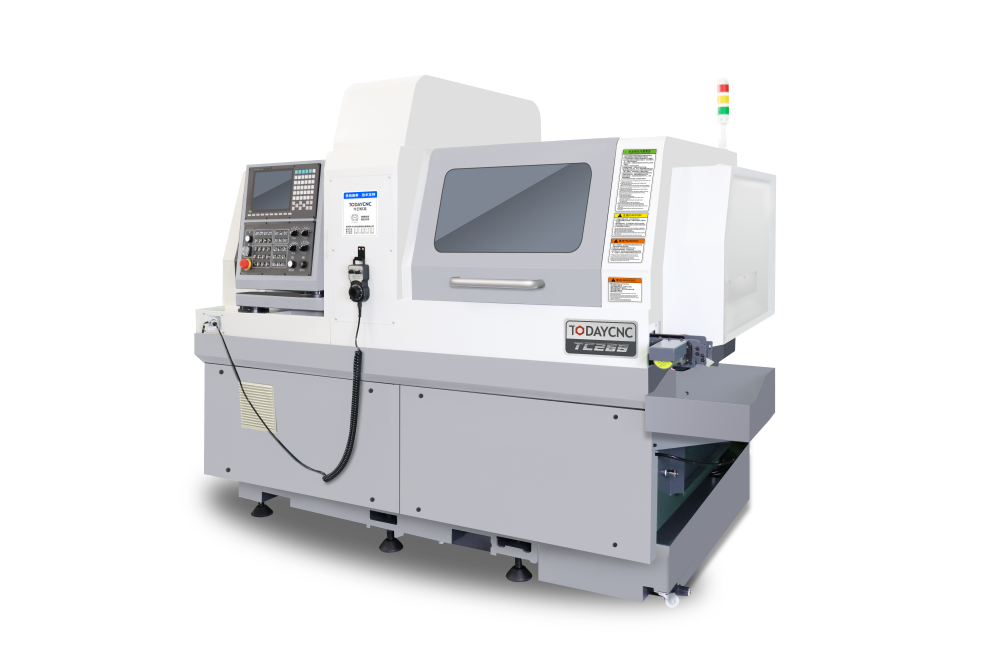The Importance of Regular Maintenance for Swiss Type CNC Lathes: Ensuring Precision and Longevity
The Importance of Regular Maintenance for Swiss Type CNC Lathes
Table of Contents
1. Understanding Swiss Type CNC Lathes
2. Benefits of Regular Maintenance
3. Key Maintenance Tasks for Swiss Type CNC Lathes
4. Daily Maintenance Checklist
5. Weekly and Monthly Maintenance Procedures
6. Troubleshooting Common Issues
7. Hiring Professional Maintenance Services
8. FAQs about Swiss Type CNC Lathe Maintenance
9. Conclusion
1. Understanding Swiss Type CNC Lathes
Swiss Type CNC lathes are sophisticated machining tools designed for high-precision parts manufacturing, particularly in industries such as aerospace, automotive, and medical device production. Unlike traditional lathes, Swiss lathes excel in producing small, intricate parts with minimal tolerance variations. They operate through a unique sliding headstock mechanism, which allows for superior control over the cutting tool while maintaining the material's position. Understanding the workings of these machines is essential for implementing effective maintenance strategies.
2. Benefits of Regular Maintenance
Regular maintenance of Swiss Type CNC lathes offers a multitude of advantages that extend beyond mere functionality:
2.1 Enhanced Precision
Routine checks and adjustments ensure that machines operate within specified tolerances, reducing the likelihood of defects in manufactured parts.
2.2 Increased Productivity
Maintenance minimizes unexpected downtimes, allowing for uninterrupted production schedules and increased output.
2.3 Extended Equipment Lifespan
Consistent upkeep prevents wear and tear, prolonging the life of key components and reducing replacement costs.
2.4 Cost-Effectiveness
Investing in regular maintenance can save substantial amounts in the long run by preventing costly repairs and operational disruptions.
3. Key Maintenance Tasks for Swiss Type CNC Lathes
A thorough maintenance routine encompasses various tasks, each critical to ensuring optimal performance:
3.1 Lubrication
Proper lubrication of moving parts is essential to minimize friction and wear. Utilize the manufacturer's recommended lubricants and follow the specified schedules for application.
3.2 Cleaning
Regular cleaning of the machine, especially around the guideways and spindle, prevents the accumulation of debris that can hinder performance.
3.3 Calibration
Periodically calibrate the machine to ensure that it operates within the desired specifications. This includes checking tool offsets and ensuring that the tool paths are accurate.
4. Daily Maintenance Checklist
Implementing a daily maintenance checklist can help in identifying potential issues before they escalate:
- Inspect the machine for any signs of wear or damage.
- Check fluid levels (oil, coolant) and replenish as needed.
- Ensure that the cutting tools are sharp and correctly installed.
- Clean the machine's exterior and ensure that all safety guards are in place.
5. Weekly and Monthly Maintenance Procedures
In addition to daily tasks, weekly and monthly procedures are crucial for comprehensive maintenance:
5.1 Weekly Tasks
- Inspect and clean the coolant system to prevent contamination.
- Examine the belts and pulleys for signs of wear.
- Check the alignment of the machine and make adjustments as necessary.
5.2 Monthly Tasks
- Perform a detailed inspection of electrical components.
- Test the emergency stop function to ensure it operates correctly.
- Review all safety measures and replace any worn-out safety gear.
6. Troubleshooting Common Issues
Despite regular maintenance, issues may still arise. Here are some common problems and their solutions:
6.1 Inconsistent Cutting Quality
If parts are not meeting quality standards, check tool wear, alignment, and machine calibration.
6.2 Unexpected Machine Stops
This may be caused by overheating or electrical faults. Monitor coolant levels and inspect electrical connections.
6.3 Excessive Vibration
Vibrations may indicate misalignment or worn bearings. Conduct a thorough inspection and replace any faulty components.
7. Hiring Professional Maintenance Services
While in-house maintenance is essential, hiring professional services can provide expertise that enhances the longevity and performance of Swiss Type CNC lathes. Professionals offer:
7.1 Specialized Knowledge
They possess the skill set to diagnose complex issues that may not be apparent to operators.
7.2 Advanced Tools and Equipment
Professionals have access to specialized tools that ensure precise maintenance and repairs.
7.3 Comprehensive Maintenance Plans
They can provide customized maintenance schedules tailored to specific operational needs, ensuring machines remain in peak condition.
8. FAQs about Swiss Type CNC Lathe Maintenance
8.1 How often should I perform maintenance on my Swiss Type CNC lathe?
Maintenance frequency depends on usage, but daily, weekly, and monthly tasks are generally recommended.
8.2 What are the signs that my lathe needs maintenance?
Signs include inconsistent part quality, unusual noises, and frequent machine stops.
8.3 Can I perform maintenance myself, or should I hire a professional?
Basic maintenance can often be performed by trained operators, but professional services are advisable for complex issues.
8.4 What is the typical lifespan of a Swiss Type CNC lathe?
With proper maintenance, Swiss Type CNC lathes can last many years. Regular maintenance significantly contributes to their longevity.
8.5 What tools do I need for routine maintenance?
Essential tools include various wrenches, gauges for calibration, cleaning supplies, and lubricants.
9. Conclusion
Regular maintenance of Swiss Type CNC lathes is not just a routine task; it is a strategic approach to ensuring precision, productivity, and longevity in manufacturing processes. By adhering to a comprehensive maintenance schedule, operators can minimize downtime, enhance cutting quality, and ultimately drive cost savings. The investment in both time and resources towards maintenance pays substantial dividends, securing the operational integrity of these advanced machines. As we move forward in an increasingly competitive manufacturing landscape, the importance of diligent upkeep will be paramount in achieving operational excellence and sustained success.
Related Blog














